All-Star Comics #23 (1944)
written by Gardner Fox
pencils by many
The Justice Society of the period worked much like an anthology book, with a framing device to narrate individual stories by its members. Accordingly, while Garner Fox writes everything, each segment has a different penciler.
-Joe Gallagher: introduction, Atom story and finale
-Sheldon Moldoff: Hawkman segment
-Stan Aschmeier: Starman, Dr. Mid-Nite and Johnny Thunder segments
-Cliff Young: Spectre segment
(the above is from online sources, since this is WAY before credits were a thing)

Considering all segments this is a 38 page story (!!!), so I’m necessarily going to skip A LOT of details.
The framing device is that a lot of emotion-themed crimes are being committed by a new villain, the Psycho-Pirate.
Also, I see that the Silver Age Daily Planet is not the only newspaper with humongous titles!
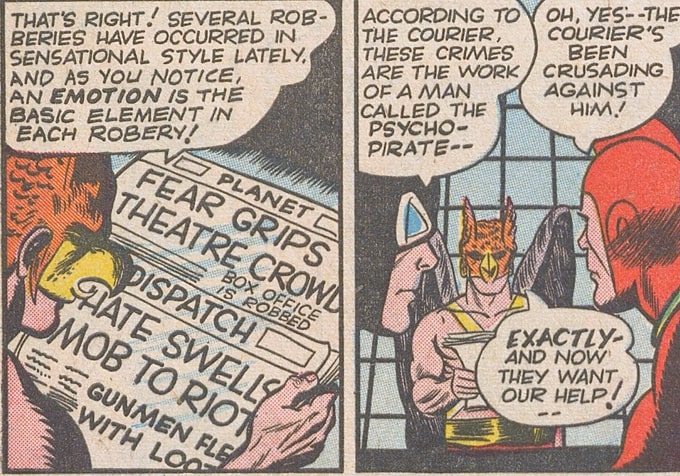

The JSA is being called into action by a famous newspaper, the Courier, and its creepy-looking publisher.

Golden Age artwork is… something.

The fact that crimes are going to be emotion-based is treated like something incredibly dangerous, for some reason. Everyone is very worried, except Johnny Thunder who is being his usual Johnny Thunder.
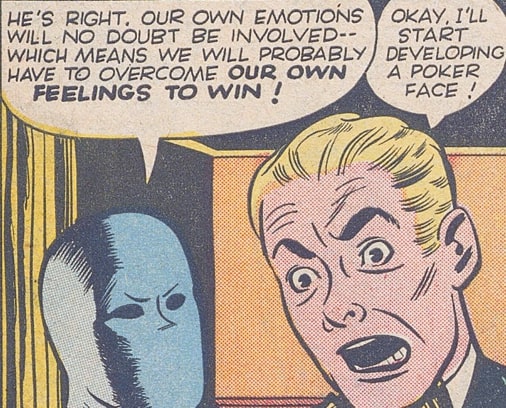
I’ve always found the range of heroes in the Justice Society truly fascinating. When the Spectre talks about having fought greed before, I can’t help but wonder if he’s being methaphorical or if he’s fought the very embodiment of the concept of greed.

Hawkman’s story is love-themed. You would expect this to involve Hawkgirl (who I don’t think was ever a member during the Golden Age), but it’s actually about a wealthy socialite.

At first I wasn’t sure this was really love-themed, since it looked like a fairly typical blackmail/kidnapping scheme…

…but it really IS about Hawkgirl, in a way.
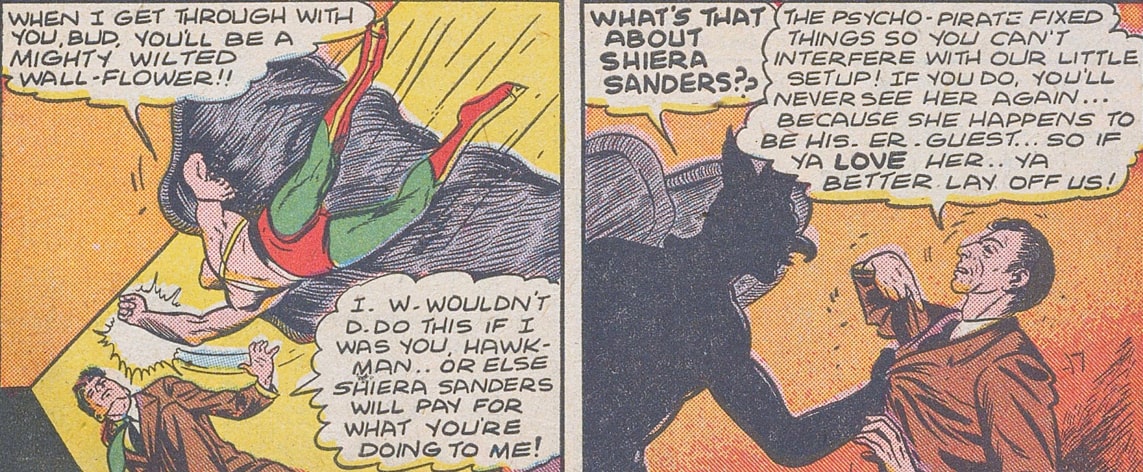
It should be noted that, while Shiera was just a civilian when first introduced in 1940, she became Hawkgirl in 1941. So this should be way past the time she’d be playing the damsel in distress.
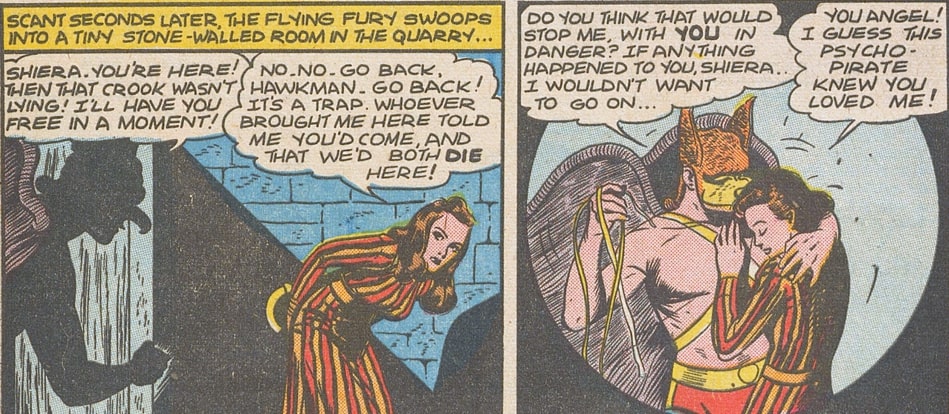
Still, she’s kind of helpful in the escape, thanks to women carrying too much stuff in their purses.

A perfectly fine little story, definitely the best penciled of the issue, but nothing groundbreaking.
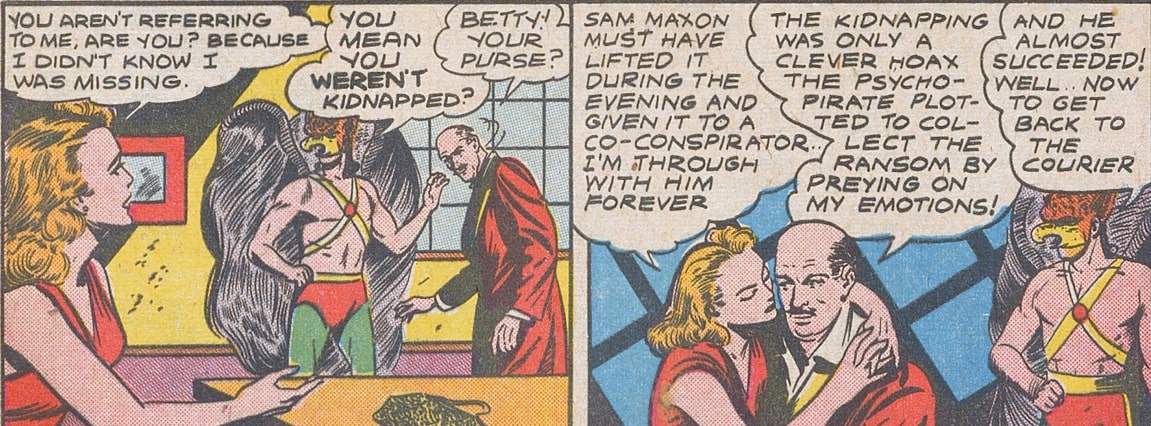
Next is the Starman story, and the framing is WEIRD. There’s a “hate clinic” that scams patients by giving them fencing lessons!?
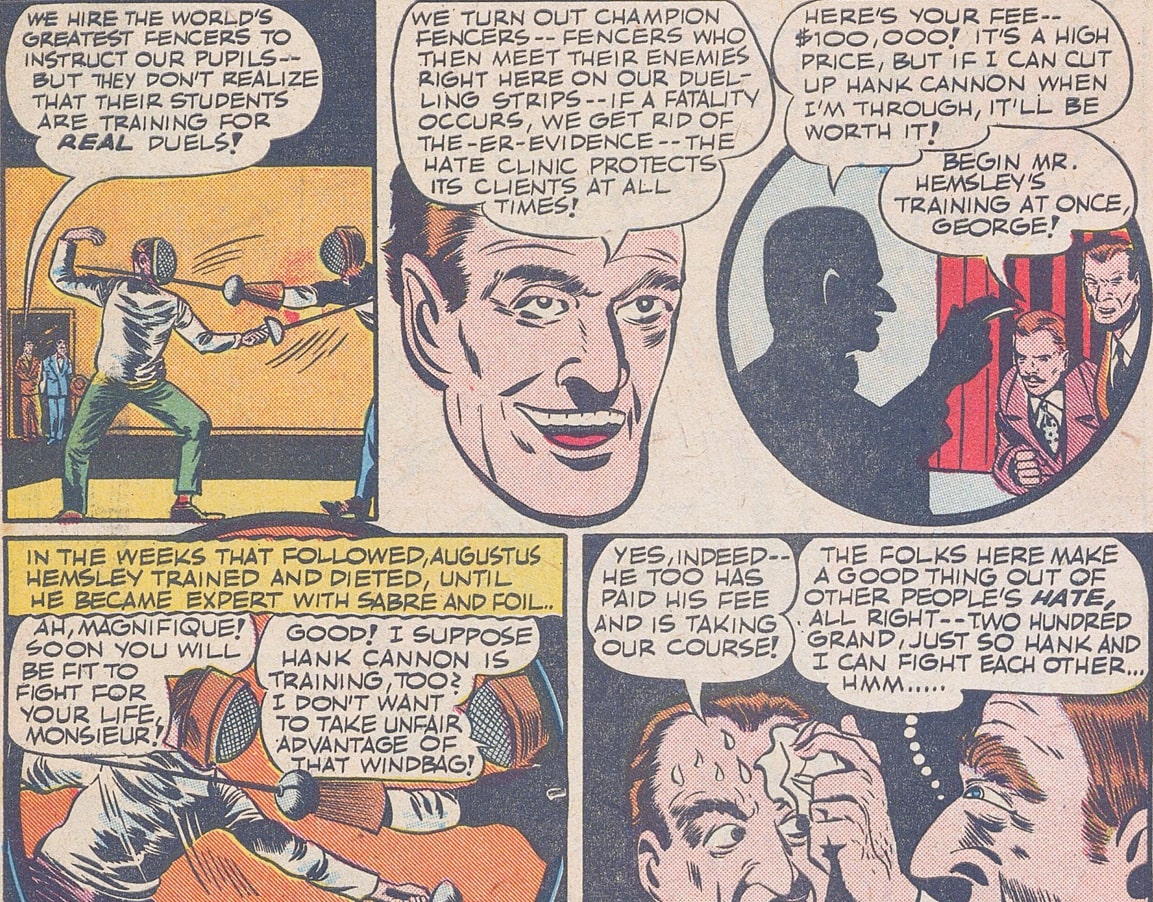
Starman is phenomenally powerful thanks to his Gravity Rod™ that can pretty much anythinig science-related needed by the story.
So naturally his story is about a fencing duel.


The Golden Age, man.
Next is the fear-themed Dr. Mid-Nite story, which is about an entire city being kidnapped!

Not only that, but the Psycho-Pirate is also engaged in freaking GERM WARFARE!!!
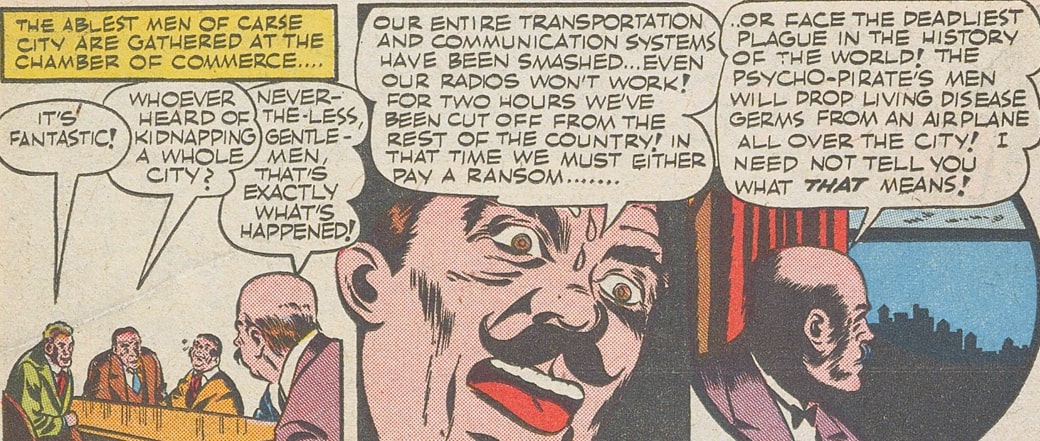

I said the Hawkman story is the best drawn and I stand by it, but the Dr. Mid-Nite story is definitely the most atmospheric.
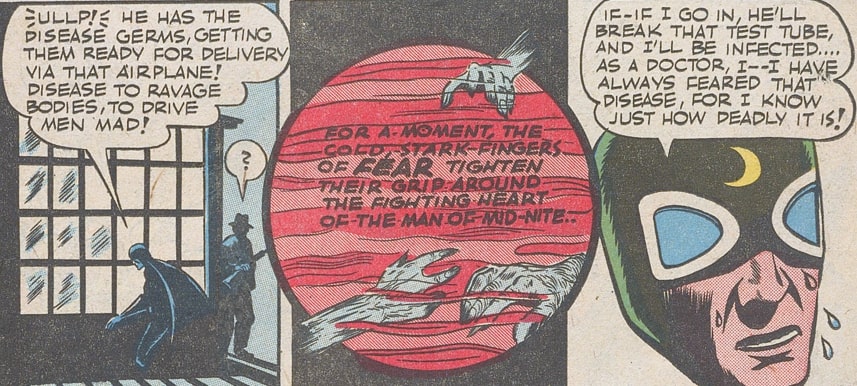
It’s also fairly clever: the Psycho-Pirate didn’t REALLY have germs at his disposal. This actually makes perfect sense for his kind of character.

Next is Johnny Thunder, and his emotion is going to be conceit.
Wait, is “conceit” considered an emotion!?
In any case, it’s about some safe manufacturers that are so sure they’re the best in the business they end up being scammed.
A lot, and I mean A LOT of Golden Age stories are about people being scammed. Like 30% of all Golden Age stories.
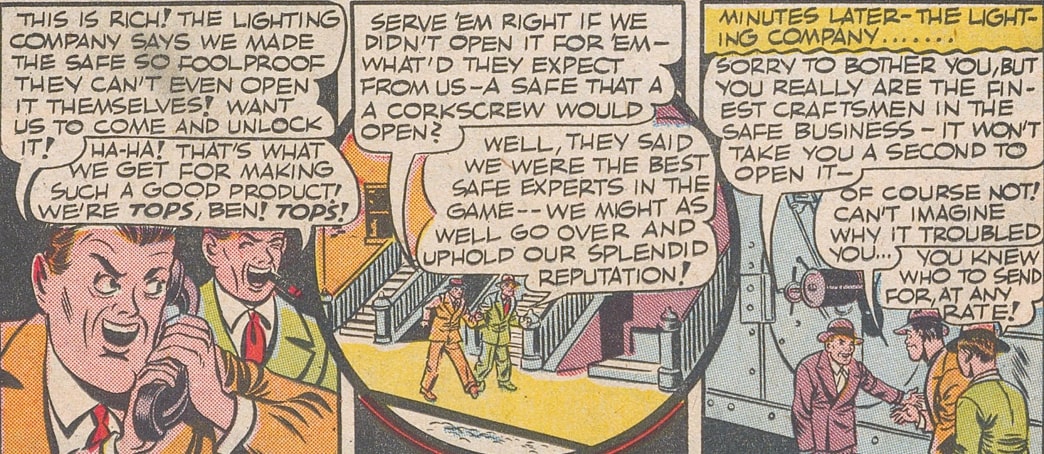

There are only two things you need to know about Johnny Thunder: he has control over an all-powerful genie, and he’s an absolute moron.
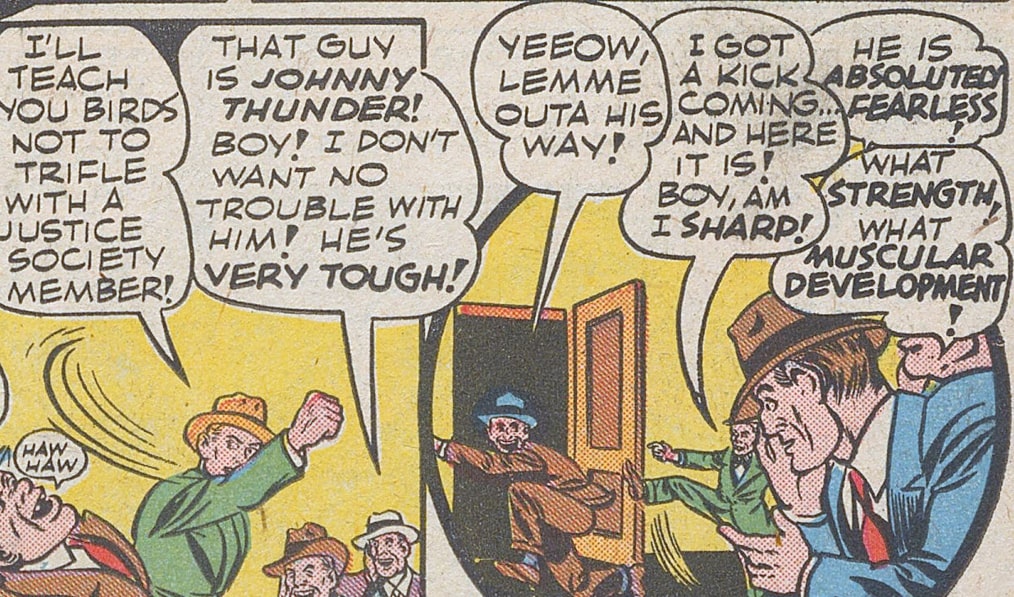
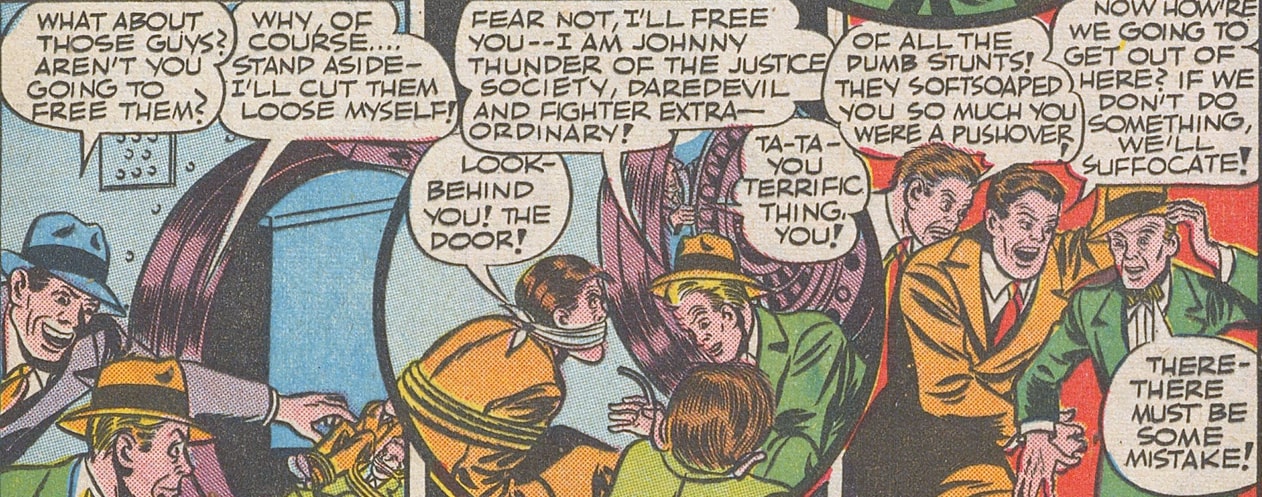
He’s on par with Jimmy Olsen being an idiot, but at least Johnny has an advantage of being a comedic character ON PURPOSE.
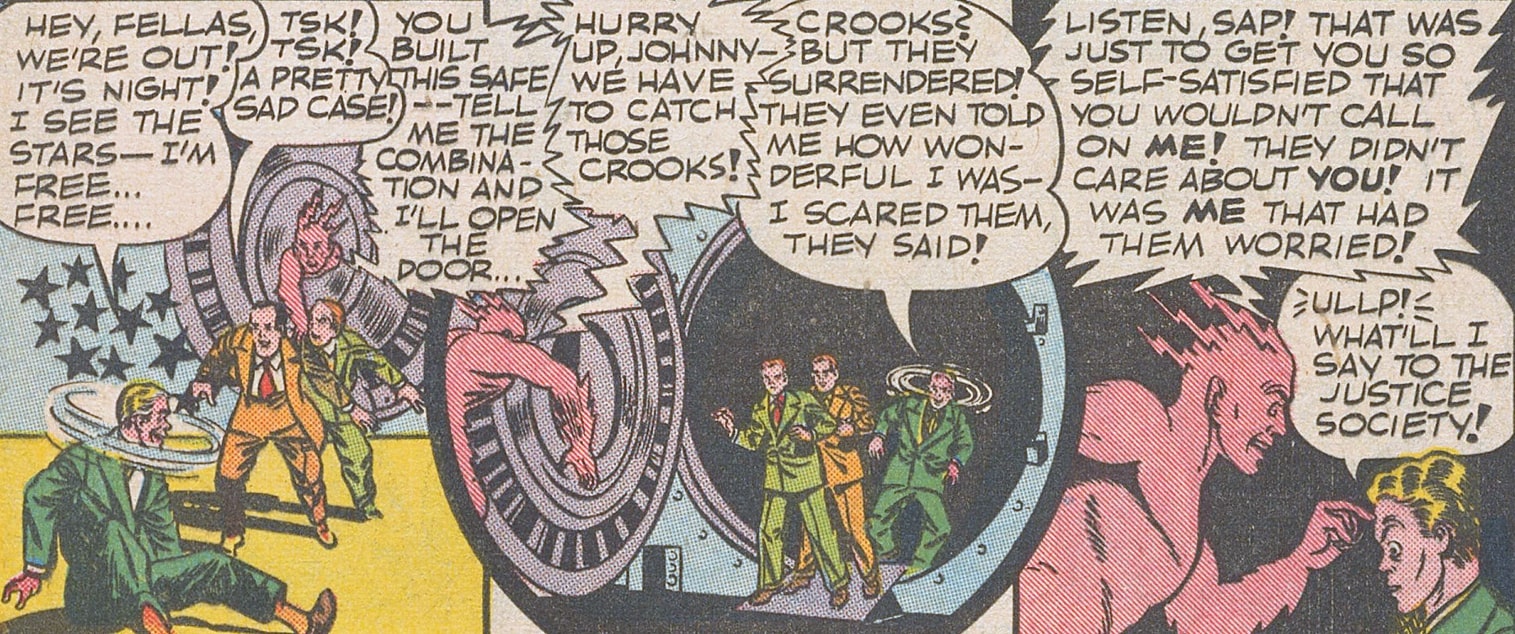
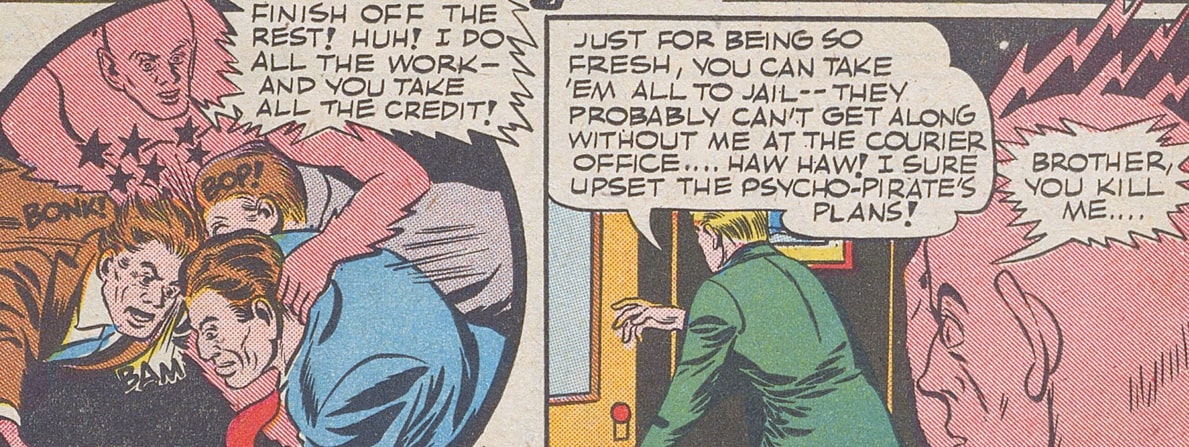
Next is the Spectre, who as anticipated is going to fight greed. Much to my disappointment, not literally.
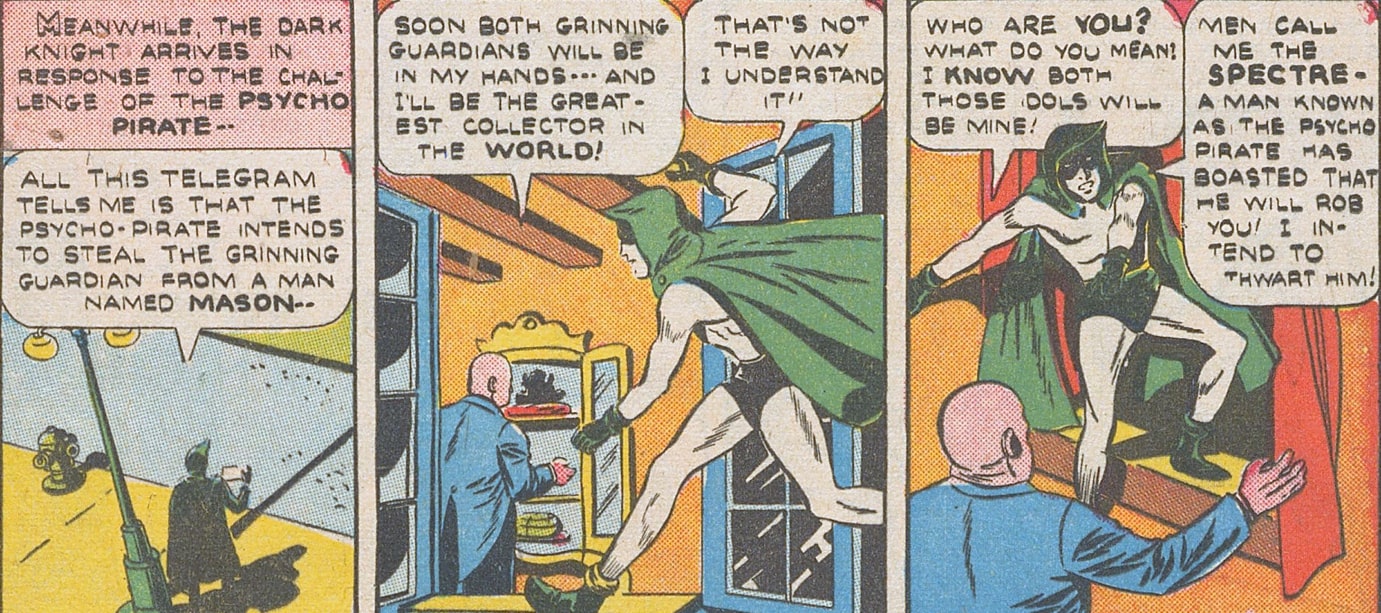
The Spectre stories are all over the place. Sometimes he’s the near-omnipotent Spectre you’d expect from the Silver Age, and sometimes he’s just a guy with a cape.

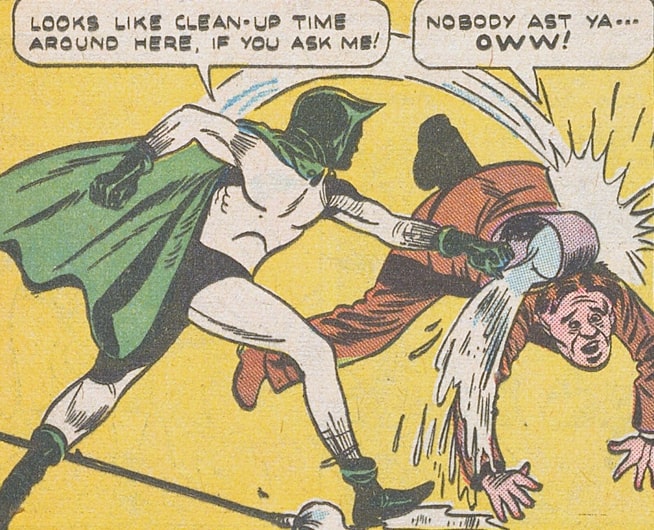
Also I’m not sure this really qualifies as “greed”. Wouldn’t this count as conceit way more than the Johnny Thunder story?
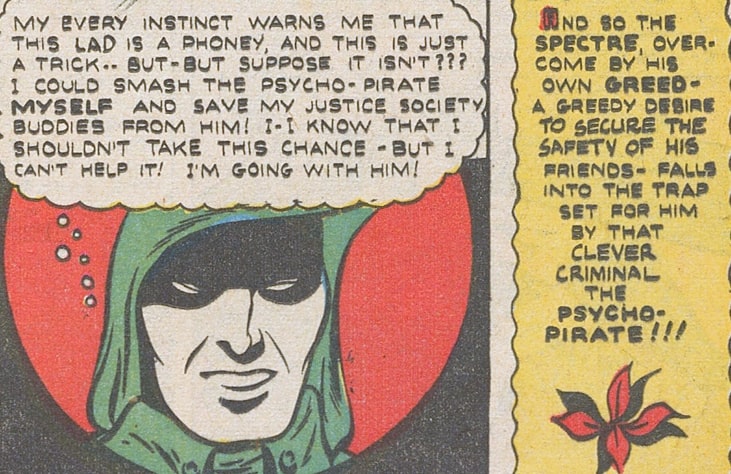
I seriously cannot understand how the Golden Age Spectre works.
Even if he doesn’t have phenomenal divine powers, isn’t his whole deal that he’s actually dead!?

Next we have the Atom dealing with despair, and it’s about the publisher losing his newspaper AND his wife at the same time.

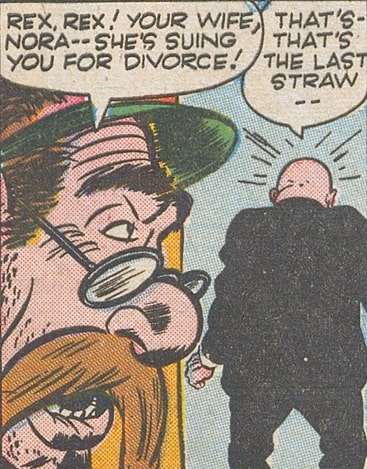
And the Atom is in despair because the rest of the JSA has already been defeated.

Which I thought was a trick, but… nope, he really HAS defeated them off-panel…
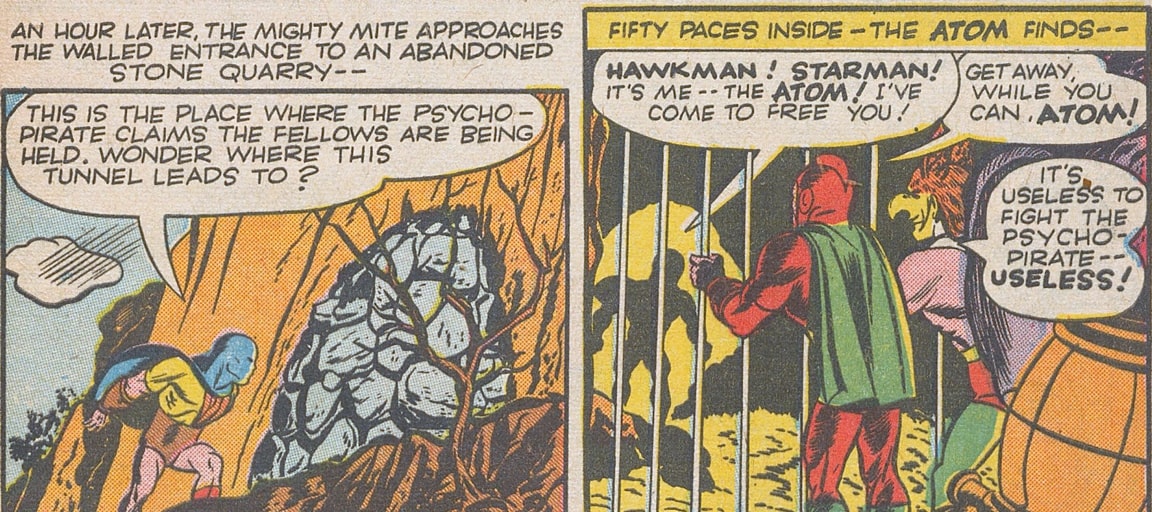
…except he hasn’t, because the Atom later finds out it’s yet another trick.

The Atom even finds out who the Psycho-Pirate is, but he’s shot before he can do anything about it.

Naturally it’s just a minor wound to his shoulder, so he gets back to the JSA to reveal the Psycho-Pirate is actually… one of the only two named civilians in the story, what are the odds.

And he would’ve gotten away too with it too, if it wasn’t for those meddling superheroes!

The original Psycho-Pirate has a second appearance in the Golden Age. Here’s the recap, courtesy of his only Silver Age story:


Trivia: Wonder Woman was a member of the JSA in this period, but she completely skips this story. While this goes unaddressed, in an Earth-2 story from 1978 (Wonder Woman #243) she gives us an explanation for why she missed some of the Golden Age adventures.
Specifically she explains it for a different issue, but still neat!
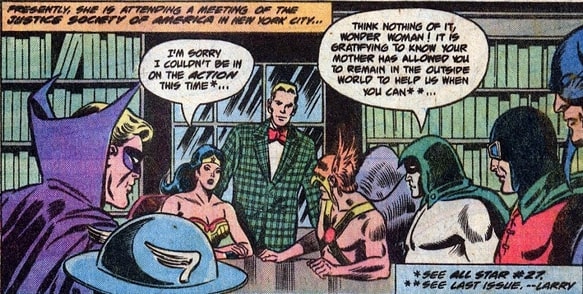
I expected this kind of deep dive explanation to come from Roy Thomas, but it’s from a Jack C. Harris story.
Historical significance: 1/10
The original Psycho-Pirate is only significant for being the inspiration for his more famous successor.
Silver Age-ness: 7/10
Despite being the Golden Age, the absurdity still applies.
Does it stand the test of time? 4/10
It’s not all bad, but this really feels the weigh of changing writing styles. The Hawkman and Dr. Mid-Nite stories are by far the best, and if only they weren’t so short they’d be easily adaptable. The others are not exactly memorable by today’s standards. The framing device is fine, but the Psycho-Pirate himself is very generic; and while the idea of each member having to do with a case involving emotions is great… most of this has little to do with what the story was supposed to be about.
In short, Johnny Thunder says it best: 

The art on some of that Johnny Thunder segment is reminiscent of early Chester Gould (Dick Tracy).